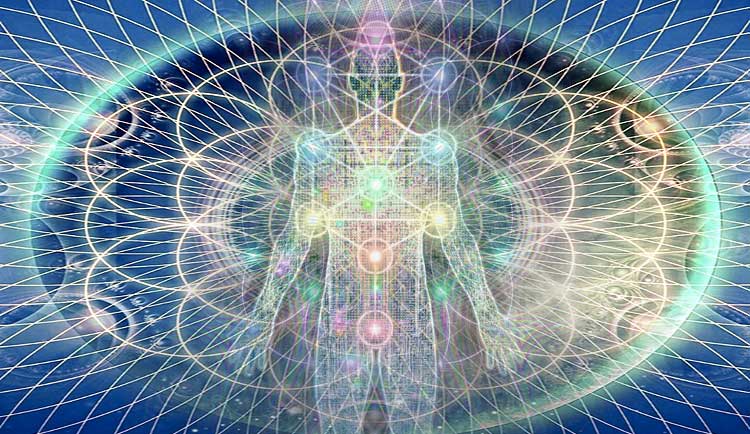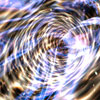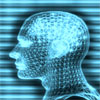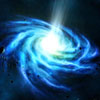The Scientific Basis For The Akasha (Akashic)
In his classic Raja Yoga, Swami Vivekananda gave the following account of Akasha:
“It is the omnipresent, all-penetrating existence. Everything that has form, everything that is the result of combination, is evolved out of this Akasha. It is the Akasha that becomes the air, that becomes the liquids, that becomes the solids; it is the Akasha that becomes the sun, the earth, the moon, the stars, the comets; it is the Akasha that becomes the human body, the animal body, the plants, every form that we see, everything that can be sensed, everything that exists. It cannot be perceived; it is so subtle that it is beyond all ordinary perception; it can only be seen when it has become gross, has taken form. At the beginning of creation there is only this Akasha. At the end of the cycle; the solid, the liquids, and the gases all melt into the Akasha again, and the next creation similarly proceeds out of this Akasha.”
In the traditional conception Akasha is an all-encompassing medium that underlies all things; the medium that becomes all things. It is real, but so subtle that it cannot be perceived until it becomes the many things that populate the manifest world. According to the contemporary Indian sage Radja Deekshithar we can experience Akasha: our normal senses do not register it, but we can reach it through spiritual practice. The ancient Rishis reached Akasha through a disciplined, spiritual way of life, and through yoga. That is why they could describe its nature in words, making it an essential element of the philosophy and mythology of India.
In the West it was Aristotle who introduced an Akasha-like fifth element in his philosophy of nature: he called it Aether and said that it fills all of space from the moon upward. In modern time the occult spiritual teacher Madam Blavatsky spoke of Akasha as an emanation of Mulaprakriti, the deeper root of reality. Her student Rudolf Steiner developed this notion as the Akashic Chronicles, a kind of universal “diary” from which humanity can acquire full knowledge of its past and present, as well as future.
A hundred years ago Nikola Tesla – the maverick genius who was the father of modern communication technologies – revived the concept of Akasha within the modern scientific context. He said that there is an “original medium” that fills space, and compared it to Akasha, the light-carrying aether. In his unpublished 1907 paper “Man’s Greatest Achievement” Tesla wrote that this medium, a kind of force field, becomes matter when Prana, cosmic energy, acts on it; when the action ceases, matter vanishes and returns to Akasha. Since this original medium fills all of space, everything that takes place in space can be referred to it. He asserted that this Akashic medium – and not the four-dimensional structure put forward at the time by Einstein – is the decisive aspect of science.
However, by the end of the first decade of the twentieth century, physicists adopted Einstein’s mathematically elaborated four-dimensional space-time and, with the exception of a few maverick theoreticians, refused to consider any concept of a space-filling ether, medium, or force field. Tesla’s insight fell into disrepute, and then into oblivion. But today it is being reconsidered. David Bohm, Harold Puthoff, and a small but growing group of scientists are rediscovering the role of a field that would connect and create coherence – in the cosmos, in the living world, and even in the sphere of mind and consciousness.
This field is not outside of nature: it is the heart of nature. It is the originating ground of all things in the universe, and also their ultimate destination. It is the fundamental medium of the cosmos. It underlies all the particles, and all the forces and fields that govern particles and the systems build of particles, throughout space and time. Science has a name for it: it is the quantum vacuum (also known as the “unified vacuum” or “nuether”).
(Ed~Scientists are just beginning to understand that the vacuum is full of various particles that are continuously fluctuating in and out of existence. See article here.)
The Quantum Vacuum As Akashic Record
Even without benefit of the latest vacuum-theories, the experience of Apollo 14 Commander Edgar Mitchell led him to conclude that “the quantum vacuum is the holographic information field that records the historical experience of matter.” This may be true, but just how does the vacuum record the “historical experience of matter”?
The detailed elaboration of the answer to this question will constitute the next milestone in the advance of contemporary physics. But in a qualitative yet basically correct way we can already grasp the nature of this process by looking at the sea. The sea, too, records all things in it. And, although its record is not permanent, it connects all things with all other things.
When a ship travels on the sea, waves spread in its wake. These waves affect the motion of other ships – something that has been dramatically brought home to anyone who has ever ventured to sail a small craft in the vicinity of an ocean liner. Vessels that are fully immersed in the sea affect things not only on the surface, but also above and below. A submarine, for example, creates subsurface waves that propagate in every direction. Other submarines – and all fish, whales, or objects in the sea – are exposed to these waves and are affected by them. A second submarine likewise “makes waves,” and this affects the first, as well as all other ships, fish, and objects in that part of the sea.
If many things move simultaneously in or on the sea, the water becomes full of waves that intersect and interfere. When on a calm day we view the sea from a height – a coastal hill or an airplane – we can see the traces of ships that passed there hours before. We can also see that the traces intersect and create complex patterns. The modulation of the sea’s surface carries information about the ships that created the waves. This has practical applications: one can deduce the location, the speed, and even the tonnage of the vessels by analyzing the wave-interference patterns created by their wake.
As fresh waves superimpose on those already present, the sea becomes more and more modulated: it carries more and more information. On calm days it remains modulated for hours, and sometimes for days. The wave patterns that persist are the memory of the ships that plied the waters. If the patterns were not cancelled by wind, gravity, and shorelines, this memory would persist indefinitely. Of course, wind, gravity, and shorelines do come into play, and sooner or later the sea’s memory dissipates. (This, we should note, does not mean that the memory of the water disappears. Water has a remarkable capacity to register and conserve information, as indicated among other things by homeopathic remedies that remain effective even when not a single molecule of the original substance remains in dilution.)
We now apply this process of wave recording and interconnecting to the quantum vacuum. There are analogies, but also differences. In the vacuum there are no things or forces capable of canceling or attenuating the waves. All the particles that make up matter in the universe, and all the particles that are responsible for force, are themselves waves in the vacuum. The particle-waves do not cancel each other. The vacuum is superfluid; motion through it does not produce friction. In this it is like liquid helium cooled to four degrees Kelvin. At this point, near the absolute zero of temperature, helium becomes a frictionless medium in and through which all things move without resistance. In the absence of contrary forces, they would move forever. This is the condition that reigns in the cosmic vacuum – when movement through it is smooth and not approaching the speed of light, it does not produce resistance. We can now understand why we are not ordinarily aware of the vacuum. It does not oppose or hinder our movement, so we no more know it than fish knows water.
Although the effect is subtle, the vacuum interacts with all things: all things “disturb” it. In the language of physics, charged particles “excite (or disturb) the vacuum’s ground state.” Russian physicists Anatoly Akimov, G.I. Shipov, V.N. Binghi, and co-workers produced a mathematically elaborate theory of this interaction. In their theory the vacuum is a physical substance that extends throughout the universe. This substance registers and transmits the traces of the charged particles that disturb it, for all particles create secondary waves in it. The vortices of these waves link the particles and the objects made up of particles nearly instantly: their group speed is of the order of 10 to the 9th power c – one billion times the speed of light!
Wave-linking through the vacuum involves a factor that is more subtle than the known forms of energy; it is best called information. Information in the vacuum is not a metaphysical feature: it has a scientifically acceptable explanation. It is standard knowledge that particles that have a quantum property known as “spin” also have a magnetic effect; they possess a specific magnetic momentum. Hungarian theoretician Laszlo Gazdag pointed out that this magnetic impulse is registered in the vacuum through particle-triggered secondary vortices. (Whether waves create vortices in water or in the vacuum, they consist of nuclei around which circle other elements – H2O molecules in the case of water, and virtual bosons in the case of the vacuum.) In this way the vortices created by charged particles in the vacuum carry information, much as magnetic impulses do on a computer disk.
The information carried by a vacuum vortex corresponds to the magnetic momentum of the particle that created it: it is information on the state of that particle. The vortices interact: when two or more torsion waves meet, they form an interference pattern. The resulting pattern integrates the strands of information on the particles that created them. Thus the pattern itself carries information on the entire set of the particles that created it.
Vacuum vortices are both supraluminal – faster than the speed of light – and enduring. The “phantoms” generated in the vacuum by charged particles persist even in the absence of the objects that generated them. This was discovered by Vladimir Poponin and his team at the Institute of Biochemical Physics of the Russian Academy of Sciences. Poponin, who has since repeated the experiments at the Heartmath Institute in the U.S., placed a sample of DNA molecule into a temperature-controlled chamber and subjected it to a laser beam. He found that the electromagnetic field around the chamber exhibits a specific structure, more or less as expected. But he also found that this structure persists long after the DNA itself has been removed from the laser-irradiated chamber: the DNA’s imprint in the field is still present. Poponin and collaborators concluded that a new field structure is triggered in the physical vacuum. The phantom effect is a manifestation, they claim, of the hitherto overlooked vacuum substructure.
The conclusion is evident. Vortices in the vacuum record information on the state of the particles that created them, and their interference pattern records information on the ensemble of the particles whose vortices have interfered. In this way the vacuum records and carries information on atoms, molecules, organelles, cells, even on organisms and populations of organisms. There is no evident limit to the information that vacuum-waves could record and conserve. In the final count they can record information on the state of the whole universe.
The interference patterns of propagating waves are holographic patterns in which the information conserved is in a distributed form: present throughout the patterns. This is similar to the way information is present in a hologram created by interfering light waves. In such a hologram the entire image of the recorded object is enfolded throughout the interference pattern. And the whole image reappears when any part of the holographic film or medium is illuminated.
Interfering vacuum-vortices are nature’s holograms. They carry information on all the things that excite the vacuum. Since the vacuum is superfluid, this interaction does not produce friction; hence the effects are extremely subtle: they are not registered by most bodily senses or any but the most high specialized physical instruments. But supersensitive living organisms do register them, as coherence phenomena.
The interaction of the vacuum with the particles and systems that emerge and evolve in space and time recalls the ancient notion of the Akashic Record, revealing that the Hindu seers were on the right track. There is a deeper reality in the cosmos, a field that conserves and conveys information and thus connects and correlates. In recognition of this timeless insight, this writer named the re-discovered vacuum-based holofield, “Akashic Field.” The Akashic or A-field is a universal field, joining science’s four universal fields: the G-field (the gravitational field), the EM-field (the electromagnetic field), and the strong and the weak short-range fields that create attraction and repulsion among the particles of the atomic nucleus.
Science’s New View Of The World
At the frontiers of the empirical sciences a new view of the world is emerging. It is a view that reenchants the cosmos, for it tells us that the cosmos is an organic, highly coherent, strongly interconnected integral system.
The crucial feature of the emerging view is space- and time- transcending correlation. Space and time do not separate things. They connect things, for information is conserved and conveyed in nature at all scales of magnitude and in all domains.
The current rediscovery of the Akashic Field as a cosmic holofield reinforces qualitative human experience with quantitative data generated by science’s experimental method. The combination of unique personal insight and interpersonally observable and repeatable experience gives us the best assurance we can have that we are on the right track: an A-field connects organisms and mind in the biosphere, and particles, stars, and galaxies throughout the universe. This transforms a machine-like universe that is blindly groping its way from one phase of its evolution to the next into a whole-system universe that builds on the information it has itself generated.
The world is more like a living organism than a machine. It evolves from the present toward the future on the basis of its evolution from the past to the present. Its logic is the logic of life itself: evolution toward coherence and wholeness, through interconnection and interaction.
Excerpt from Science And The Reenchantment Of The Cosmos: The Rise Of The Integral Vision
Posted in Science For The New Agewith comments disabled.






